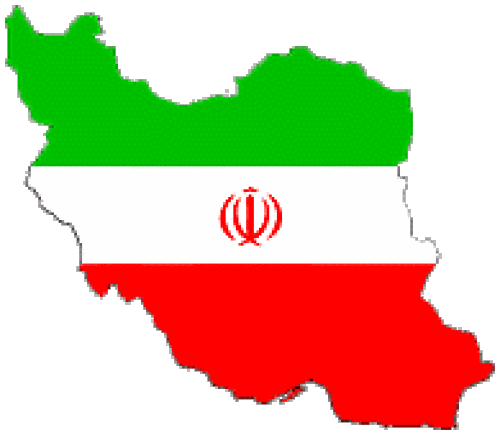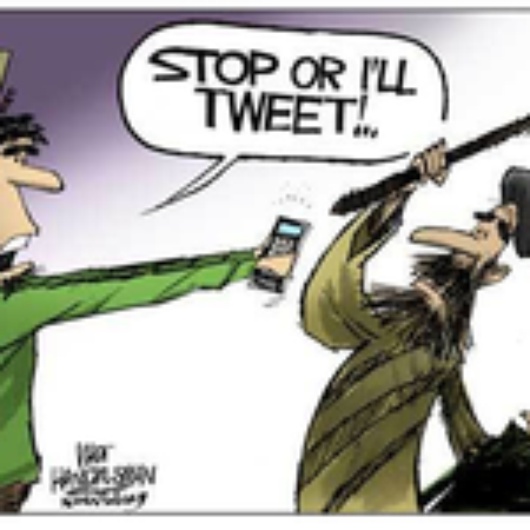
Iran – Twitter – Revolution
Published on
People are on the streets in Tehran, the death toll is rising, and rumors are spreading that not only students but also some figures inside Establishment would begin to openly challenge Ali Khamenei's legitimacy as supreme leader.
Some reports claim that Hashemi Rafsanjani - head of the Assembly of Experts, a body that has the constitutional authority to anoint and remove the supreme leader - is trying to assemble a coalition of grand ayatollahs in Qom against Khamenei. It is unprecedented that Ayatollah Montazeri, who was Ayatollah Khomeini's former heir apparent, a genuine grand ayatollah, has openly challenged both this election and Khamenei's reign.
Social networks and their citizen-journalists are active while mainstream media can’t cover the real-time events some have already labeled demonstrations as newest Twitter revolution so is there maybe coming a new green revolution or is the picture biased and overemphasized by those who are using these modern networks as mean of modern warfare.
It is unprecedented that Ayatollah Montazeri--who was Ayatollah Khomeini's former heir apparent, a genuine grand ayatollah, not someone who had mid-ranking credentials and was made an ayatollah overnight like Khamenei--has openly challenged both this election and Khamenei's reign.
The Results
Results gave 63% of the vote to President Mahmoud Ahmadinejad and 34% to Mir Hossein Mousavi, the strongest opposition candidate, with tiny votes going to the two other contenders. The Mousavi camp say the true result -- allegedly leaked by the interior ministry -- had its candidate winning more than 60% of the vote. The quarrel is therefore not over a handful of stuffed ballot boxes or a few contentious provinces, but over more than ten million votes.
 Since the controversial and hasty crowning of Ahmadinejad only hours after the
polls closed, the numbers have been subjected to intense statistical
scrutiny by experts around the world, but so far no "smoking gun" has
been found hidden in the numbers, and the debate is as fierce as ever.
Since the controversial and hasty crowning of Ahmadinejad only hours after the
polls closed, the numbers have been subjected to intense statistical
scrutiny by experts around the world, but so far no "smoking gun" has
been found hidden in the numbers, and the debate is as fierce as ever.
Ahmadinejad's claims have some base in a phone poll carried out across all 30 provinces three weeks before the vote that gave Ahmadinejad a 2-1 lead. Also his official share of the vote on Friday was almost identical to the second round result in 2005.
(More this e.g. in Mail&Guardian online)
Events after Iran's elections are (again) got early label of Twitter revolution. The social networking site, which allows users to post messages, or "tweets", of up to 140 characters, has shown itself perfectly suited to a fast-moving situation where there is a thirst for snatches of information in real time.
The new trend of present decade seems to be 'Internet revolution'. Filipinos, famously, overthrew their government way back in 2001 with the help of text messaging. The Indian Ocean tsunami of 2004 was the moment when blogging arrived in the news and earlier this year, Moldovans used Twitter to help organize anti-government protests and now Iran is on the same way. More in my article “Twitter revolution- Case Moldova”
 While
connected people are empowered ones and the real work of Twitter is not
only gather people fast on the streets but again it to empowers
citizen-journalists at a time when mainstream media reporters can't get
to the scene. Phone footage and grainy pictures were copied onto blogs
and news sites, while mainstream broadcasters, their correspondents
constrained, relied on user-generated footage in an attempt to
circumvent the censored state broadcasts.
While
connected people are empowered ones and the real work of Twitter is not
only gather people fast on the streets but again it to empowers
citizen-journalists at a time when mainstream media reporters can't get
to the scene. Phone footage and grainy pictures were copied onto blogs
and news sites, while mainstream broadcasters, their correspondents
constrained, relied on user-generated footage in an attempt to
circumvent the censored state broadcasts.
Twitter is also misused and or it can show a overemphasized picture of situation, it can also be used for disinformation. Some rumours on Twitter were quickly repeated and amplified by bloggers: that three million protested in Tehran last weekend (more like a few hundred thousand); that the opposition candidate – Mr Moussavi - was under house arrest (he was being watched); that the president of the election monitoring committee declared the election invalid just after elections (not so).
However, Iran experts and social networking activists say that while Iranian election protesters have certainly used social media tools, no particular technology has been instrumental to organizers' ability to get people on the street. Indeed, most of the organizing has occurred through far more mundane means: SMS text messages and word of mouth. Before after election riots it was estimated that there were only some 8,600 Twitter users in Iran. To confuse counteractions the amount today is naturally higher as many supporters abroad have registered themselves as located in Iran.
Twitterers have circulated reports at breakneck speed of the violence being used against protesters in the streets of Iran to millions worldwide, complete with video and photo evidence of government forces firing indiscriminately into crowds, beating people with batons and raiding student dormitories. The Iranian regime's efforts to block Internet access - and especially the streaming of photos and videos of the violence surrounding the protests - by decreasing the bandwidth, effectively slowing down online access to a frustrating level, tech-savvy Iranians have repeatedly found ways to bypass official restrictions using proxy sites that reroute Iran-based messages to post on Twitter.
Revolution?
So is there revolution going on in Iran? I doubt – not yet anyway. With Twitter there is a risk that it amplifies one side while forgetting that Mr. Ahmadinejad has real support – surely majority in rural areas. It may not be that over 60 % like showed in elections but probably as much at least than his main opponent.
However something historic is afoot today in Iran. Here I refer Karim Sadjadpour, Associate, Carnegie Endowment for International Peace who in Council on Foreign Relations interview June 18th 2009 made following analysis:
The scale of the protests is unprecedented. The depth of people's sense of injustice and rage is palpable. People are continuing to bravely take to the streets, risking their lives, despite the fact that they've been told the Basij [Iranian paramilitary force] and Revolutionary Guards have been authorized to use force. This has not dissuaded them. The fissures we're seeing amongst revolutionary elites are also unprecedented. It's very difficult to see how the status quo ante could prevail no matter what happens.
Ahmadinejad won the recent elections thanks to the support of the rural population and the army, but the street protests are an indication that due to profound societal trends the era of the clerical rule in Iran is nearing the end. Currently the regime is able to cope with the tide of street protests which in any case are not going to last long, but the next elections will bring a revolution. The share of the young people in Iran's population is among the world's highest and most of the voters in the country are young. Currently an anti-clerical drive is gaining momentum in Iran. As in most countries, the tendency is most widespread among the younger people and intellectuals. It is the essence of the conflict now brewing in Iran that the Islamic clericalism has no adequate response to the challenges of modernity. The clerical regime is failing to lay out a vision of a new Iranian national identity for the country's population.
People are not calling for a wholesale revolution as they were in 1979. I'm not hearing the word enqelab, i.e. revolution, mentioned by the protestors. There exists a political maturity now that didn't exist then. People don't have the same naïve, utopian dreams that they had in 1979. They want a system that is representative of the people. Many people believe that the Islamic Republic does have important institutions, such as the institution of the presidency and parliament. But what they want to see is the unelected institutions, which currently have the majority of the constitutional authority, to be either removed or their authority seriously limited.
My view
There is some similarities between cases earlier in Moldova (see e.g. my article “No coup d’etat but big drama anyway” and now in Iran:
Demonstrations after elections when opposition looks results as more or less fabricatedUse of Twitter to mobilize fast crowds on the streetsUse of Twitter as alternative source to mainstream (inside country and abroad) media to give real or other side of picture about situation on the groundDemonstrations implemented mainly by young urban citizens while rural majority quietly is bystander or supporting governmentSome conspiracy theories about foreign involvement occur (in Moldova government accused Romania, in Iran Israel)Coming months will show if the outcome in Iran will follow that in Moldova where new elections are waited to come soon, not directly because of demonstrations but due the conflicting views inside establishment. What is clear is that in Iran courageous, inspiring young people are putting their bodies in front of bullets and tear gas so the real pressure is boiling on the ground.
Like expected the response of Iran’s supreme leader Khamenei’s first response was very firm. That’s his modus operandi as a despot: Never compromise in the face of pressure, it only projects weakness and invites more pressure. The real question in Iran – as well in Moldova and Georgia – will be how the present regime will copy the unrest in near future. Violence and oppressive measures are short term actions; the sustainable solution would be to moderate policy by taking citizens’ concerns seriously. If the pressure on the ground will not be channeled through existing regime it is only question of time when boiling will change the regime more or less violent way.
For online follow-up via twitter I would recommend link "Iran Unrest - twazzup twitter"
 More my views one may find from my BalkanBlog!
More my views one may find from my BalkanBlog!



